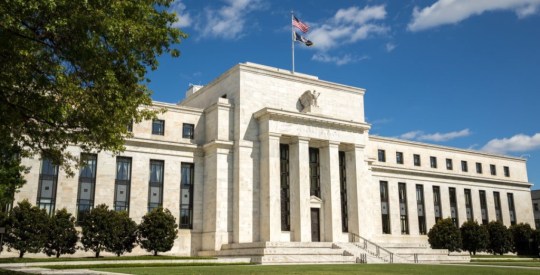While the impact of subprime defaults are still being felt in the mortgage finance market, other esoteric mortgage products that were popular during the housing boom, particularly Alternative-A (Alt-A) and option adjustable rate mortgages (ARMs), may provide another set of speed bumps on the road to recovery. Fitch Ratings‘ US subprime RMBS Price Index increased more than 5% month-over-month in January. The index tracks prices of residential mortgage-backed securities (RMBS) in the US. The 2005 vintage led the charge, showing growth of 4.7% month-over-month and the 2006 vintage further bolstered the sector improvement with a 2.81% increase. While positive, these results are overshadowed by the glaring exceptions to the overall trend, the 2004 and 2007 vintage securities, which experienced monthly price declines of 7% and 11%, respectively. The poor performance of the 2004 vintage is driven by an increase in the six-month constant default rate (CDR). The 2004 CDR rose to 18.6% from 17.7% month-over-month in January. In addition, 90-day plus delinquencies in the 2007 vintage jumped to 14.6% from 14% in the same period, suggesting default rates may begin increasing within the 2007 vintage, Fitch Solutions managing director Thomas Aubrey said. “Higher quality borrowers’ ability to refinance this past summer resulted in higher prepayment rates, but left 2004 vintage pools on average with lower credit quality borrowers,” he said. As HousingWire previously reported, the volume of 60-plus day delinquencies in subprime mortgages is almost universally on the rise and the market could be in for another subprime shock. Making matters worse is the concern that other nonprime segments of the market also face the danger of a surge in foreclosures. Alternative-A mortgages, those mortgages originated to borrowers with good credit, but lack proof of certain underwriting standards to make them eligible for prime loans, represented a small portion of the total origination market when mortgage rates were low in the early 2000s. But after 2003, with mortgage rates and home values on the rise, homeowners seeking equity turned to the Alt-A mortgage market. While Alt-A originations increased 54% from 2001 to 2003, they surged an additional 340% between 2003 and 2006. In a study in the St. Louis Federal Reserve Bank’s bi-monthly journal of economic and business issues (download here), St. Louis Fed economist Rajdeep Sengupta warns Alt-A mortgages originated in 2003 or later are a continued source of sustained delinquencies. Historically, the majority of Alt-A loans were fixed-rate mortgages (FRMs), but from 2003 to 2004, the share of FRMs was cut in half, accompanied by a rise in the fraction of loans that were ARMs, Sengupta wrote. Sengupta’s analysis of the Alt-A industry shows a trend of increasing lower underwriting standards for the segment of the mortgage market between 2003 and 2007. Borrowers had to provide less documentation of their ability to repay and more Alt-A borrowers had FICO scores below 680, while the rate of originations with high loan-to-values (LTV) also increased. With lowered standards, Alt-A defaults rose sharply in 2006 and 2007, Sengupta wrote. The default trend wasn’t limited to the gross number of defaults, post-2003 Alt-A borrowers defaulted at a faster rate than those with loans written before. Sengupta’s data shows about 10% of mortgages originated in 2001 were in serious delinquency after the third calendar year of repayment, in the beginning of 2003. But 2006 vintage Alt-A mortgages reached the same point of default in half that time, by the middle of 2007. The study reports delinquencies on Alt-A mortgages continue to increase. Alt-A mortgages 90-plus days delinquent after two years accounted for 4.7% of the sector in the 2005 vintage. But that number jumps to 16.4% in the 2006 vintage and 24% in the 2007 vintage, a trend that hasn’t shown signs of improving. HousingWire’s January edition explores yet another risk to the mortgage market — option ARMs. Option ARMs offer borrowers the ability to make full, interest-only or minimum payments that is less than the interest due. Research conducted by Fitch showed 94% of option ARM borrowers made only the minimum monthly payment, creating negative amortization. With many of these loans set to reset in the coming months and years, the mortgage market is faced with yet another source of increased defaults. In the last year, the number of outstanding securitized option ARMs either 90 or more days delinquent, in foreclosure or real estate-owned proceedings rose from 16% to 37%. Of the $189bn securitized option ARM loans outstanding, 88% have not yet experienced a recast event. Of these, Fitch found that 94% employed the minimum monthly payment strategy, which allowed negative amortization. Many option ARM borrowers are saddled with outstanding debt beyond their original principal and home values well below purchase price and analysts fear negative equity and payment shocks will continue as option ARM loans recast in large numbers in the coming years. Write to Austin Kilgore.
Subprime Problems Persist, as Alt-A, Option ARM Crisis Brews
Most Popular Articles
Latest Articles
Powell makes it clear: No rate cuts anytime soon
Powell made statements that indicate there will be no rate cuts anytime soon because the economy and the labor market are too strong.



